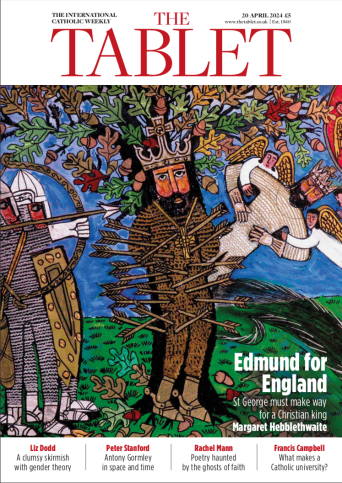There seem, at first, to be conflicting echoes. On the one hand, the gospel of Matthew (27:23-26) shows the Jewish multitude crying out for the crucifixion of Jesus and insisting that his blood should be upon them and upon their children. Kessler records Pope Pius X in 1904 firmly telling Theodor Herzl that because “the Jews have not recognised Our Lord, therefore we cannot recognise the Jewish people”. The pre-Vatican II liturgy for Good Friday made reference to “the perfidious Jews”.
On the other hand, Pope John XXIII greets some Jews who have come to visit him with the words, “I am Joseph, your brother”; Nostra Aetate proclaims that “the Jews remain most dear to God” and that God “does not repent of the gifts he makes nor of the calls he issues”; Pope John Paul II visits the National Holocaust Memorial at Yad Vashem in Jerusalem in 2000; and both he and Benedict XVI pay visits to the synagogue in Rome.
Conflict or chronological development? Dr Kessler, a distinguished Jewish theologian, head of the Woolf Institute and a fellow of St Edmund’s College, Cambridge, attempts to make sense of all this and shows that there has, indeed, been a most radical development in the attitudes of the Catholic Church towards Judaism.
The key has been the short but immensely significant Vatican II document, Nostra Aetate, to which Kessler refers with approval on diverse occasions. This document articulates in a nutshell the ideal tools for Christian-Jewish interaction: respect, understanding, dialogue. Edward Flannery, quoted by Kessler, sums up the post-Vatican II?scenario beautifully: “Nostra Aetate terminated in a stroke a millennial teaching of contempt of Jews and Judaism and unequivocally asserted the Church’s debt to its Jewish heritage.”
Edward Kessler’s book is an important contribution to our understanding of Christian-Jewish relations. In 10 of the essays, written between 1998 and 2011, he charts a developing relationship between the two faiths. He perceives in recent Christian writings three major themes: first, Christianity has become much more aware of the suffering it has inflicted on Judaism down the centuries; secondly, Christianity has begun to relearn its Jewish roots; and thirdly, some Christians in leadership roles have begun to realise that to be truly Christian in identity involves “ a right relationship with Judaism”.
In a significant essay, Kessler reminds us of the Jewishness of Mary: she was not a cradle Catholic. Of the 13 essays in his book, this was the one which I found most fascinating. Entitled “Mary – The Jewish Mother” and originally published in the Irish Theological Quarterly, the essay makes a series of points which are usually ignored or forgotten. Mary and her family would have observed the strictures of the Torah including keeping the Sabbath. They would, indeed, have been regular worshippers at their local synagogue and observed all the diverse purification laws regarding both childbirth and menstruation. Their food would have been kosher.
Kessler does well to remind us that while the Catholic Church in recent years has positioned itself as the younger brother of Judaism, and begun to stress the Jewishness of Jesus, it has significantly ignored that of Mary. Kessler believes that the Jewishness of Mary can serve as a reminder of the closeness of Judaism and Christianity and thus provide a vital bridge between the two faiths.
The problems that can arise in Christian-Judaeo relations are not ignored. Kessler is well aware of the way that politics in the shape of the Israeli-Palestinian conflict can continue to shape prejudice and mar relations between both sides. He is aware, too, of the way in which Christian intentions towards a fruitful dialogue have been mistrusted and that any dialogue which has got off the ground has sometimes been defensive on the Jewish side rather than productive.
Kessler has no infallible solution to what are intractable problems. But his volume does provide a grounding at a deep level in understanding and a real basis for continuing dialogue. I was particularly struck by his reference to Cardinal Walter Kasper’s call “for a renewed memoria futuri and for Jews and Christians to reflect on the more positive aspects of memory”. For Kasper, who was formerly president of the Pontifical Commission for Religious Relations with Jews, such religious remembrance empowers the present.
Kessler’s final three essays deal with Christian-Jewish-Muslim relations. Here again, he finds no initial solutions as such but ways forward are suggested. For example, he rightly observes that “the basis for Jewish-Christian-Muslim dialogue is that each faith must be understood on its own terms.” In his final paragraph he suggests that talking at each other rather than with each other is fruitless and doomed to failure. We need to start with a generous listening to what the religious other has to say.
13 February 2014, The Tablet
Jews, Christians and Muslims in Encounter
Three- cornered chat
Edmund for England
 Loading ...
Loading ...
Get Instant Access
Subscribe to The Tablet for just £7.99
Subscribe today to take advantage of our introductory offers and enjoy 30 days' access for just £7.99



What do you think?
You can post as a subscriber user...
User Comments (0)